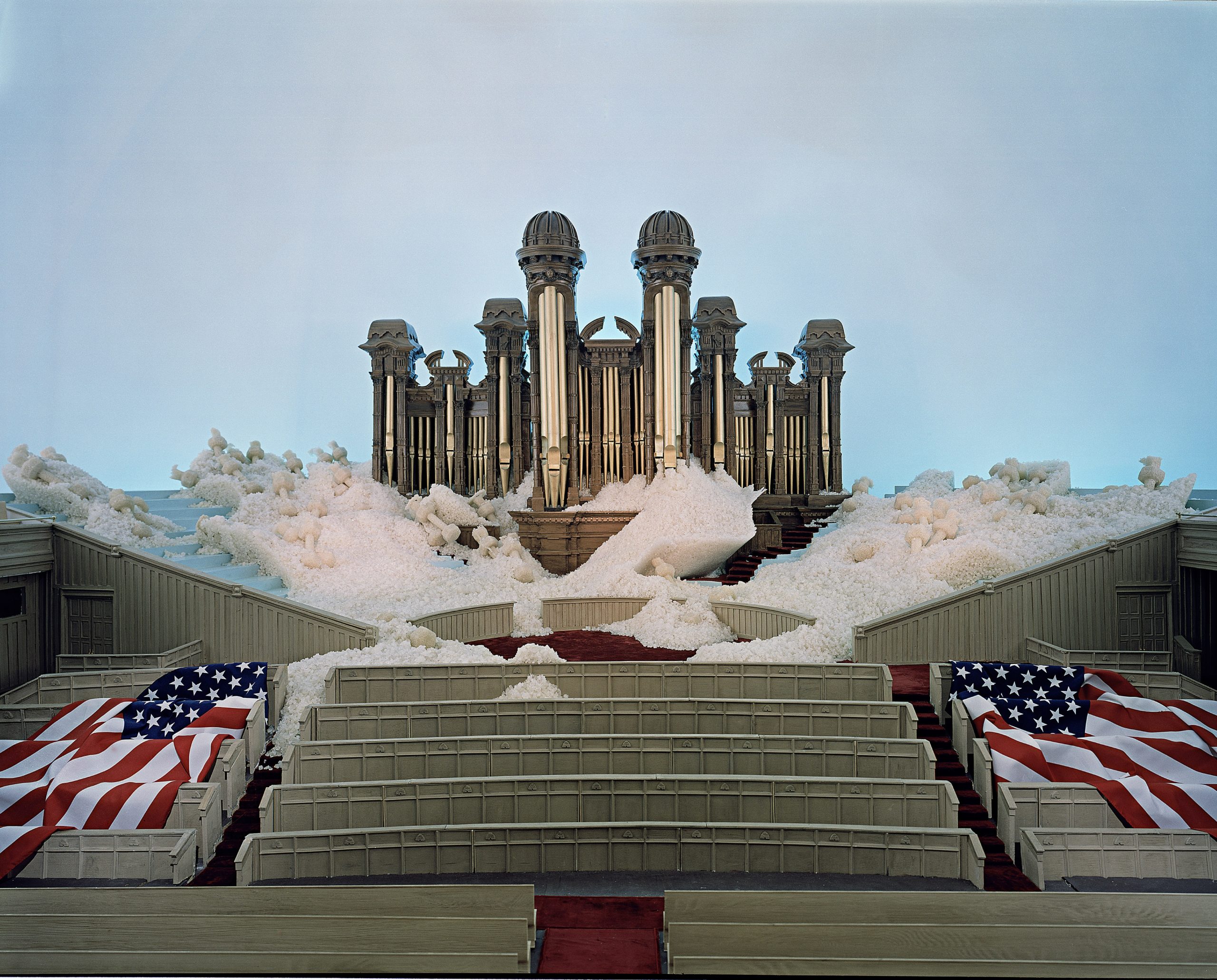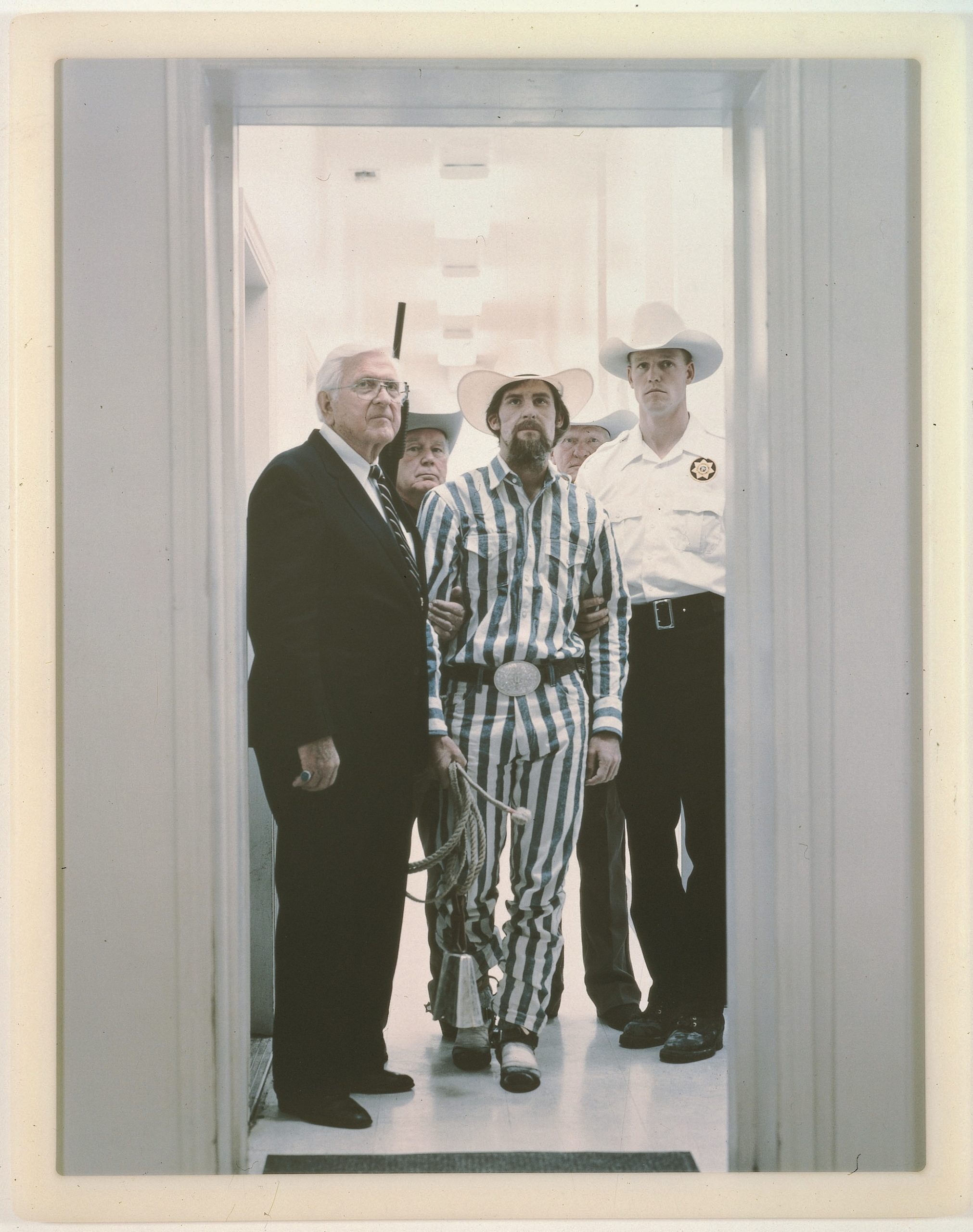
Deseret: The Drone’s gate, 1999, 2000
Matthew Barney
If you peek through the crack in the large wax doors, you can spy an exact miniature model of the famous Mormon Tabernacle in Salt Lake City, Utah. The room is covered with salt crystals that associate it with the Great Salt Lake. Desert: The Drone’s Gate is a part of the extensive work The Cremaster Cycle, which consists of 5 films, several series of photographs, sculptures and installations. The various elements in Desert: the Drone’s Gate all have their symbolic meanings in relation to the larger Cremaster Cycle. Certain salt crystals inside the tabernacle are formed into the shape of free weights. This is an attempt on Barney’s part to visualize all the three worlds that co-exist in the Cremaster-2 film: If they are stacked on top of each other, the free weights can look like a bee hive made out of salt. As such, they are linked with the landscape. But the primary purpose of the weights relates them to the human body. Cremaster 2 is based loosely upon the life story of convicted American murderer Gary Gilmore: After Gilmore kills two men he is condemned to death by the Mormon Tabernacle Choir. As a symbol for the Mormon society, the great choir brings forth witnesses who testify to the killing of one of their own members. They crave revenge according to the Mormon doctrine that propitiation for sin is only possible through blood sacrifice. Gilmore, who was also a Mormon, receives his fatal judgment willingly, as if it were predestined that he should die. He pleads to be killed by a firing squad so that he can fulfill the requirement of blood sacrifice. Later in the film Gilmore is taken to an arena made of salt where he is killed in a rodeo. Desert: The Drones Gate crates a link between the worlds of man, the landscape and that of bees. In Cremaster 2, Gary Gilmore is presented as a drone, the male bee that dies after impregnating the queen and thus giving new life.



